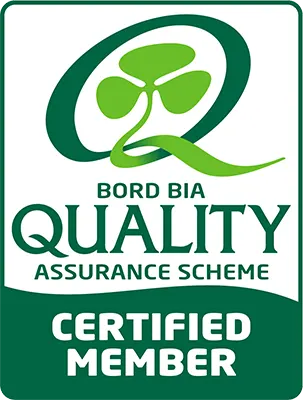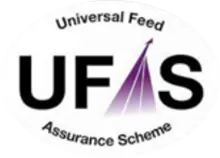With the BISS now open for applications, farmers have a solid opportunity to look at Red Clover Silage and Multispecies Sward (MSS) schemes. Both are eligible for support under the 2025 BISS with a payment of €300 per hectare, up to a maximum of 20 hectares. For many, this covers most, if not all of the seed cost and part of the cultivation work. But are they the right fit for your farm?
At Specialist Nutrition, we work with farmers who are growing both red clover and multispecies mixes successfully. Here’s what you need to know before making a decision.
What Can You Expect from the BISS Payment?
Farmers can receive a payment of €300 per hectare, available for up to 20 hectares, for the establishment of a Red Clover Silage mix or a Multi-Species Sward. This applies to crops sown between 16th July 2024 and 15th July 2025. The payment helps to cover much of the seed cost and, in some cases, cultivation costs – offering a real financial incentive for reseeding. Given the rising costs of fertilisers and the push towards more sustainable farming, this is an opportunity not to be missed.
When Should You Sow?
Both Red Clover and MSS can be sown from April to mid-July, but sowing in spring is preferable, as it allows crops to establish better and provides higher forage yields during the establishment year and first harvest. Crops sown earlier can offer up to 60% higher yields compared to those sown later in the season, which is an essential consideration for farmers looking to get the most out of their reseeding.
For the best results, take note of the following guidelines:
- Seed depth: Do not sow deeper than 1cm to ensure the seeds can emerge successfully.
- Seedbed preparation: A fine, firm seedbed with good soil contact is crucial. Using a roller before and after sowing can help improve soil-to-seed contact.
- Soil testing: Ensure soil pH is between 6.0 and 6.5 and that you have an Index 3 for Phosphorus (P) and Potassium (K) for successful seed establishment.
- Nutrient management: Red Clover and MSS have high demands for P and K, so supplementing with farmyard manure (such as slurry or dung) can reduce fertiliser costs while meeting these nutrient needs.
Red Clover: The High-Quality Forage Option
Benefits of Red Clover
Red Clover is known for its ability to fix atmospheric nitrogen – converting it into a form that is readily available to plants. This natural nitrogen fixation can provide up to 200kg of nitrogen per hectare per year, which is equivalent to 3.5 bags of urea per acre. As a result, farmers can significantly reduce their reliance on artificial fertilisers.
Additionally, Red Clover provides high-quality silage with several nutritional advantages:
- High crude protein content – This can reduce the need for supplementary concentrates, offering a cost-saving benefit.
- High mineral content, especially magnesium, which can reduce the risk of animal diseases such as grass tetany.
- Excellent palatability – Red Clover is highly palatable to livestock, leading to increased dry matter intake. This can improve liveweight gains and increase milk yields, making it an ideal feed for both dairy and beef cattle.
- High yield potential – If managed properly, Red Clover can produce up to 12–15 tonnes of dry matter per hectare, making it an excellent source of forage.
Red Clover Drawbacks
However, there are a few considerations to keep in mind before opting for Red Clover:
- Bloat risk: When grazed, particularly by cattle, Red Clover can cause bloat if consumed in large quantities. It is important to manage grazing carefully to prevent this risk.
- Grazing damage: Red Clover does not tolerate heavy grazing pressure well. This can cause the clover to die out, leaving behind only grass in the sward.
- Breeding ewes: Red Clover contains phyto-oestrogens, which can lower conception rates in breeding ewes. It’s advised to keep ewes off Red Clover for six weeks before and after mating to avoid fertility issues.
- Weed control: Due to its sensitivity to most broadleaf herbicides, weed control should be managed before sowing. Pre-sowing burn-offs and using clover-safe post-emergence sprays are essential to maintaining a clean sward.
Multi-Species Swards: A More Diverse and Resilient Option
Benefits of Multi-Species Swards
Multi-Species Swards (MSS) incorporate a range of species, including red and white clover, plantain, chicory, and various herbs, along with traditional grasses. The diversity of species in MSS offers a variety of benefits for both the environment and livestock:
- Reduced fertiliser dependence: The high clover content in MSS means there is a natural nitrogen source, significantly reducing the need for artificial fertilisers.
- Improved drought resistance: The inclusion of deep-rooting herbs like chicory and plantain helps the sward withstand dry conditions, providing reliable forage during the summer months when traditional grass-based swards might struggle.
- Enhanced animal health: The deep roots of chicory and plantain access minerals from deeper soil layers, improving the mineral content of the forage. This can help reduce reliance on wormers and improve overall animal health.
- Improved soil health: The deep rooting plants in MSS help improve soil structure and reduce compaction, which is beneficial for long-term soil health and productivity.
Multi-Species Swards Drawbacks
While Multi-Species Swards offers numerous benefits, there are also challenges to be aware of:
- Weed control: Since many of the species in MSS (such as plantain and chicory) are broadleaf plants, it’s difficult to control weeds once the sward is established. This makes pre-sowing weed control critical. Without proper weed management, weeds like docks and thistles can overtake the sward.
- Longer establishment period: MSS may take a little longer to establish compared to traditional grass swards. Ensuring the seedbed is clean and that you manage weeds properly during the early stages of growth is crucial to achieving a strong sward.
Which Option Is Right for You?
Both Red Clover and Multi-Species Swards offer excellent opportunities to reduce fertiliser costs, improve forage quality, and enhance sustainability on the farm. The choice depends on your farm’s specific needs:
- If you’re aiming for high-quality silage and reduced fertiliser costs, Red Clover is a good choice.
- If you’re looking for drought resistance, animal health benefits, and a reduced reliance on chemical fertilisers, then Multi-Species Swards are more suitable.
Before making your decision, carefully consider your farm’s soil conditions, grazing system, and forage requirements. With the €300 per hectare payment available under the BISS scheme, it’s a cost-effective way to introduce these options to your farm.
For more information on Red Clover, Multi-Species Swards, and how they can benefit your farm, get in touch with Specialist Nutrition today. Our team of experts is here to offer in-depth guidance on optimising your forage strategy, and provide tailored advice to help you achieve the best results for your farm.





